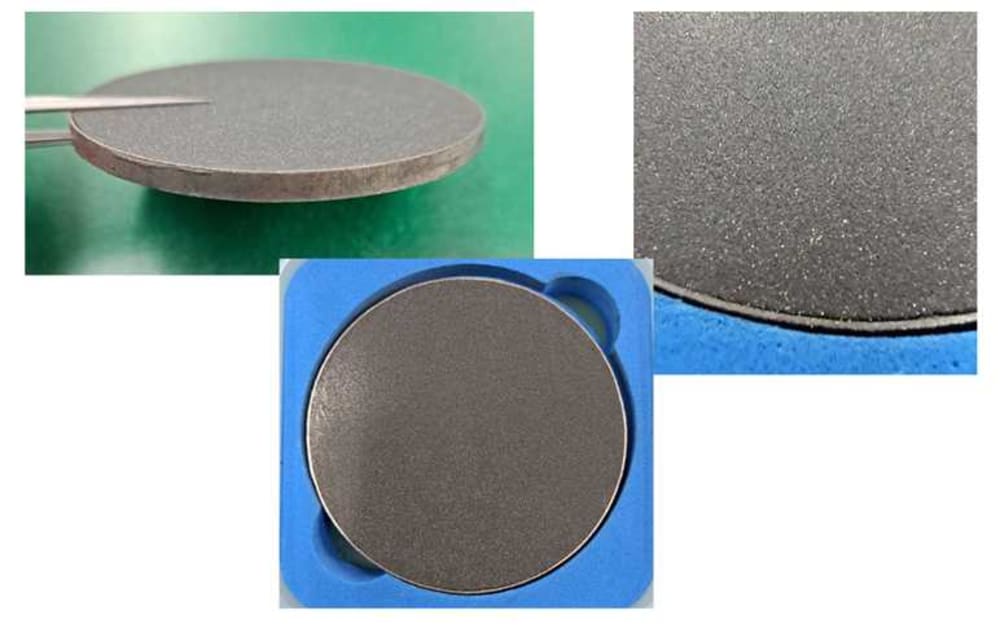The sintering method for diamond grains was first reported by Bundy et al. in 19631). This technique bonds diamond grains together to form bulk diamond. However, residual cobalt within the diamond structure can degrade its properties. As an alternative, a mixture of statically synthesized diamond and shock-synthesized wurtzite-phase boron nitride (hereafter wBN) was sintered under static high pressure, using a small amount of intermetallic compound as a binding agent. A similar approach has been used to produce diamond–cubic boron nitride (hereafter cBN) composites2) under pressures of 11–20 GPa and temperatures of 1300–2600 K, resulting in compacts with diameters of 3 mm. These materials have been reported to be effective as universal cutting tools capable of machining ferrous alloys.
Experiment
A mixture consisting of 74 wt% diamond, 18 wt% wBN, and 8 wt% TiAl3 was sintered under a pressure of 5.6 GPa, at a temperature of 1550 °C, for 2200 seconds. The resulting compact measured 60 mm in diameter and 3.2 mm in thickness. The average grain sizes of the diamond, wBN, and TiAl3 were 25 μm, 5μm, and 5 μm respectively. The Knoop hardness (Hk) of the compact was measured at 58.2 GPa (average of six points).
While the measured hardness was satisfactory, some diamond grains were observed to have detached from the surface of the sintered body. This suggests that increasing the sintering temperature may promote better grain bonding and result in higher hardness. The TiAl3 binder appeared to form small pools within the diamond–wBN structure. When these pools remain as metal, intermetallic compound, or alloy, they can weaken the structure—especially when used as the cutting edge in tools. Optimizing the dispersion of the binder within the matrix could allow the formation of carbides or nitrides through reactions with the diamond and wBN, thus eliminating the presence of free metal. Using metals that tend to form carbides or nitrides as binders may also be beneficial. In this study, no transformation from wBN to cBN was observed. However, applying higher sintering pressure and temperature may yield a significantly harder structure.
Reference
- F.P.Bundy, W.A.Basset, M.S.Weathers, R.J.Hemley, H.K.Mao and A.F.Goncharov Carbon Vol.34, No.2 pp141, 1996
- Pei Wang, Duanwei He, Liping Wang, MuZili Kou, Yong Li, Lun Xiong, Qiwei Hu, Chao Xu, Li Lei, Qiming Wang, Jing Liu, and Yusheng Zhao Applied Physics Letters 107, 101901 (2015); doi:10.1063/1.4929728
- T.Akashi, Y.Tanaka, T.Murai and A.Sawaoka The Chemical Society of Japan pp1416, (9) in Japanese
Like this entry?
-
About the Entrant
- Name:Masatada Araki
- Type of entry:individual
- Patent status:pending


